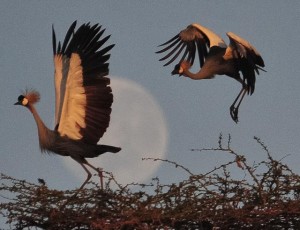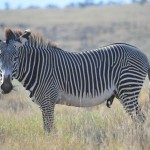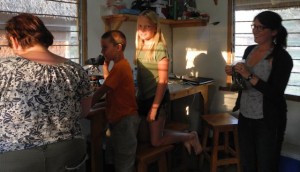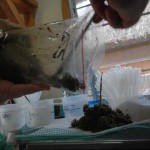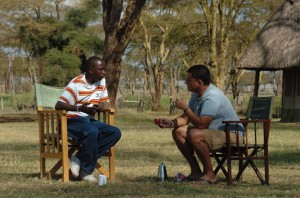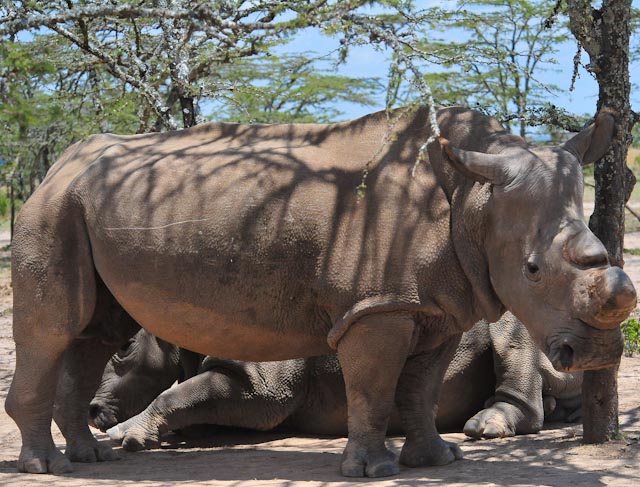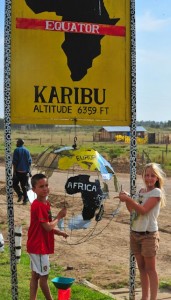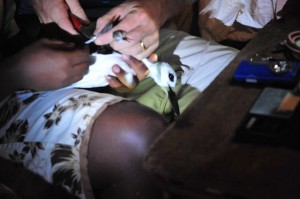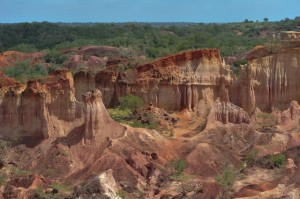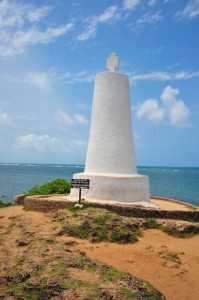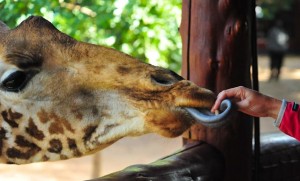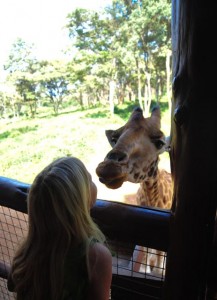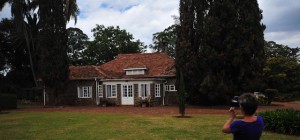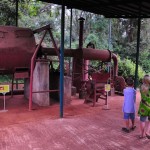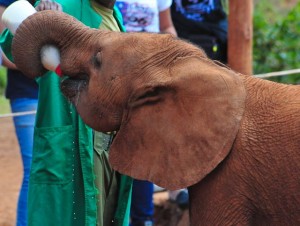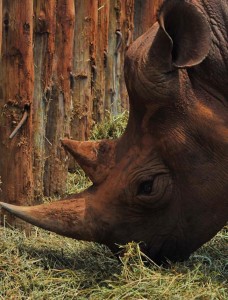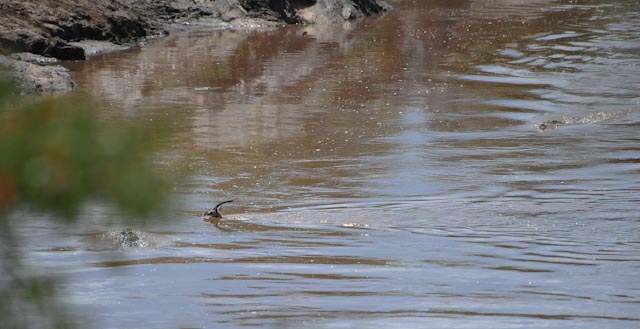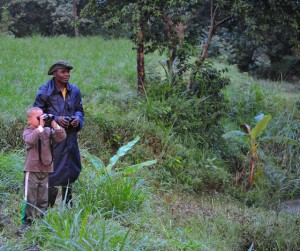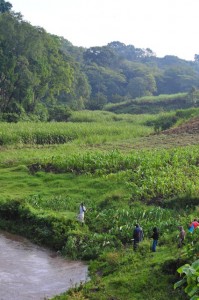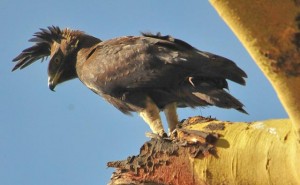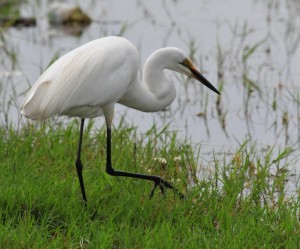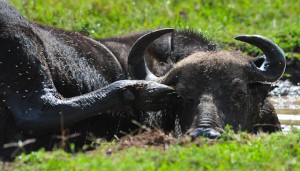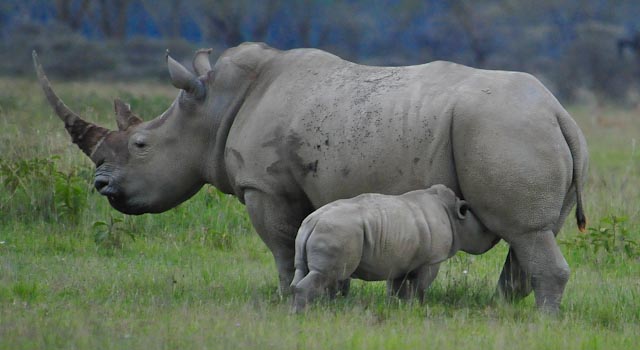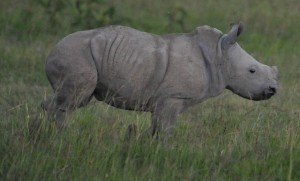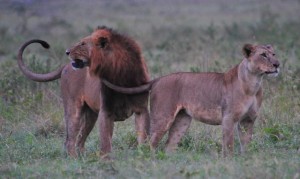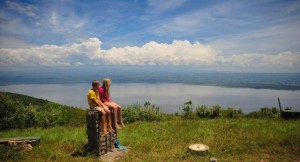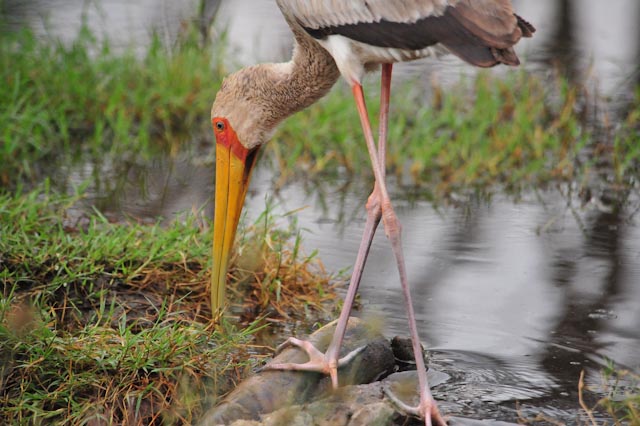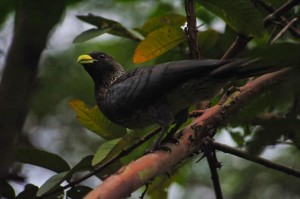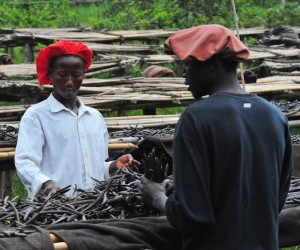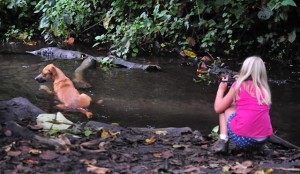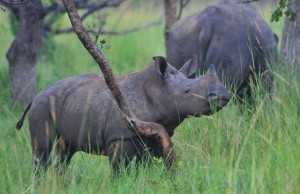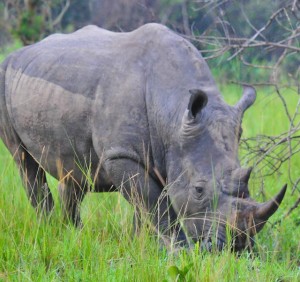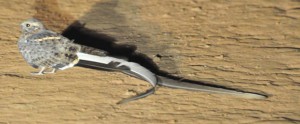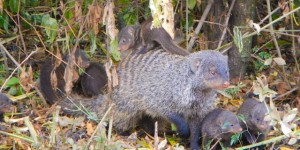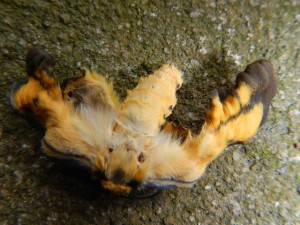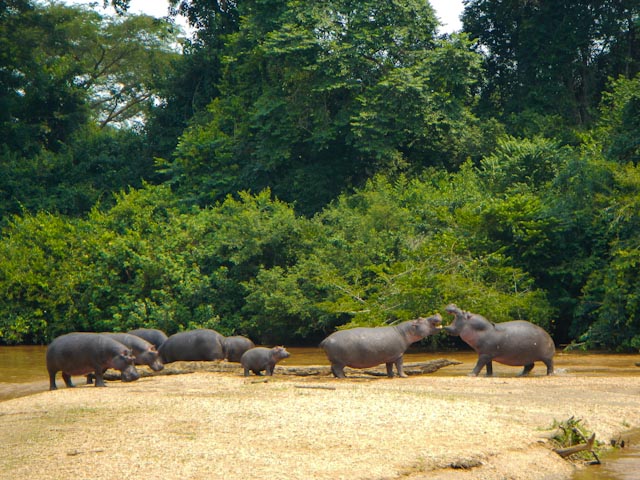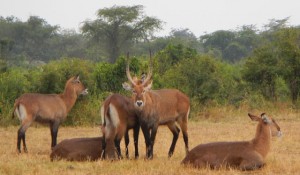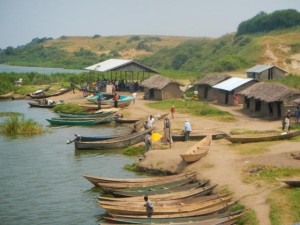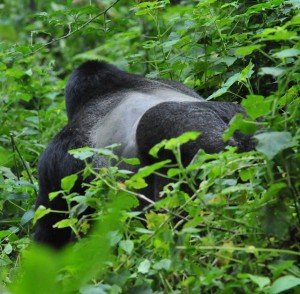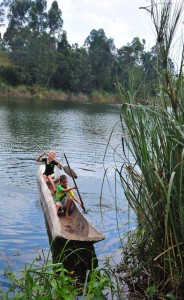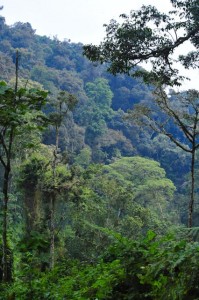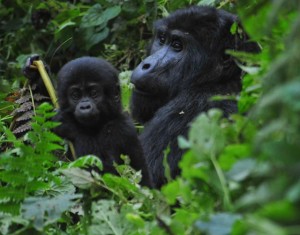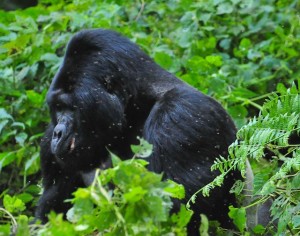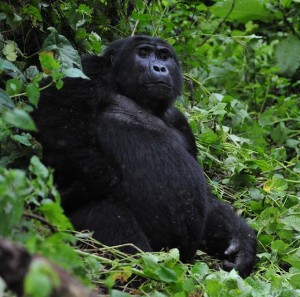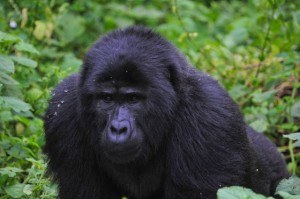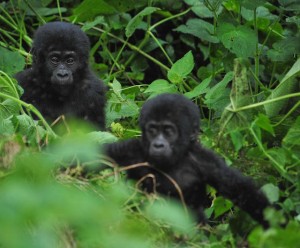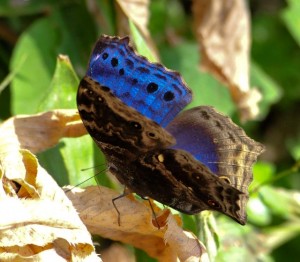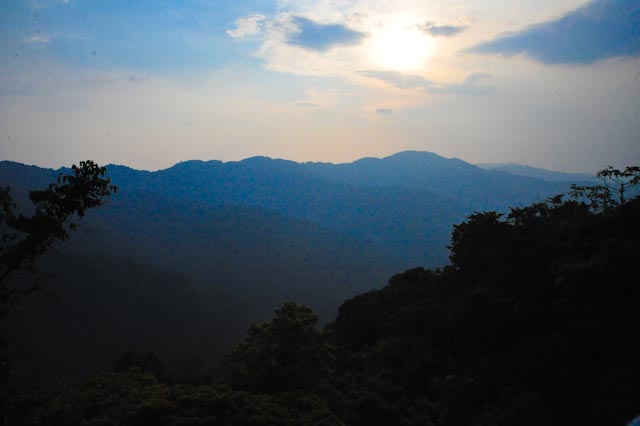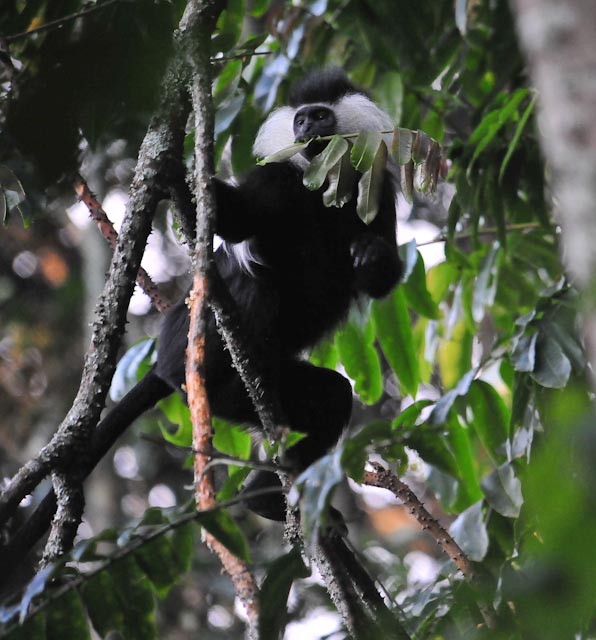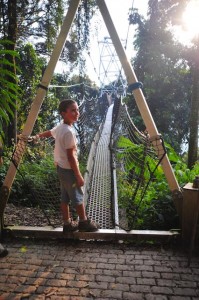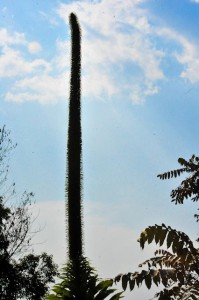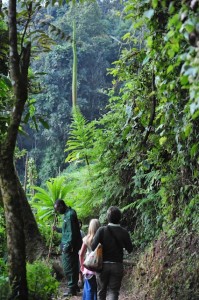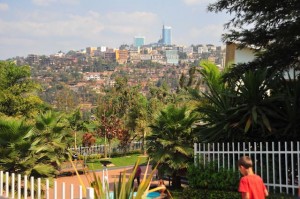Cape to Cairo Journey:
Pages to Explore:
Blog Catagories:
Photo of the day








Home | About Us | Safaris & Photographic Trips | Blog | Contact Us | Sitemap | Disclaimer
The Essence of the Journey!
We would like to do this trip to experience new cultures.
We would like to understand what makes African people pure.
What are their spiritual beliefs, understandings?
How does the spiritual world we know exist to them?
What can we learn from them?

The worldŌĆÖs rarest rhinoŌĆÖs, Grevy serious
We set off northwards, to Lewa and Ol Pejeta, probably 2 of the most important privately owned rhino sanctuaries in the country.┬Ā Thanks to Pete Behr of Afica Exposed, we were very well received by the Craig family.┬Ā Lewa was established by Anna Merz and Mzee David Craig in the 1980s
Lewa is a stronghold for GrevyŌĆÖs Zebra, the worldŌĆÖs rarest, holding 87% of the worldŌĆÖs population.┬Ā Danica & Nicolai were honoured to be some assistance in the lab doing some analysis on the faeces of Grevy.┬Ā The study funded by Denver Zoo was being run by Elizabeth and her assistant Megan and they were in the process of establishing the reason why foals were not as successful as other zebras before reaching maturity.┬Ā
Forty percent donŌĆÖt reach adulthood.┬Ā Early results show that there are a higher percentage of parasites like bloodworms in their faeces.
Edward took us around, a top bloke and very proud of his work and staff.┬Ā Being charged with looking after the animals at Lewa is a job held in high esteem, and certainly not easy.┬Ā Each of the northern black rhinos is ear notched and known personally by the scouts.┬Ā There are area scouts working in particular grids in which they count and monitor the rhinos on a daily basis.┬Ā In the event of a rhino not being seen after 4 days in a particular grid, they then dispatch a plane that will fly sects until the rhino is found.┬Ā
As at September 2012, there are only 623 northern black rhino left in the wild.┬Ā Lewa importantly has around 80 northern blacks and 58 southern whites.┬Ā LewaŌĆÖs northern black rhino population has increased from 14 in 1991 to 80 in 2012. Having 9 births in 2011, Lewa together with their top notch security systems is approaching ecological carrying capacity.┬Ā Poaching remains a threat, and unfortunately during the first week of September 2012, they lost a northern black to poachers.┬Ā Discussing the Rhino Rescue Project treatment (RRP) was therefore well received.┬Ā The continual pressure and threat that Lewa staff are under whilst looking after these animals was also highlighted.
This northern region of Kenya, includes an area known as Laikipia and holds 87% of the northern black rhino population.┬Ā It is here too that the last viable populations of the hirola antelope remain.
The Craig family together with Ana Merz were the founding patrons of Lewa.┬Ā It was moving, meeting Ian Craig and Batian who are actively involved in the region, a top class family.┬Ā Ian, now a mature conservationatist, recently cracked ribs and punctured a lung whilst working close to the Somali border setting up a controlled conservation area for the hirola antelope. He is the active leader in the Northern Rangelands Trust of which one of the aims is to increase wildlife areas in which to release rhinos.
John Pameri is LewaŌĆÖs Chief Security Officer, and together with Mike Watson (CEO), they head LewaŌĆÖs ┬Āable team.┬Ā The success of the Northern Kenya Rangelands is dependent on their joint co-operation, and together with Ol Pejeta, Lewa are two of the flagship conservation areas.┬Ā Ol Pejeta has a different model where they combine farming activities successfully with conservation areas.┬Ā Ol Pejeta is an area of just over 365km2 and they have 91 Northern Black Rhino.┬Ā Ol Pejeta last had a poaching incident in February 2012 and with Daniel and Batian Craig in charge of security the population is on the increase.┬Ā Rhino Rescue Project will work well at Ol Pejeta and Lewa and we have undertaken to work together with Kenya Wildlife Services.┬Ā
conservation areas.┬Ā Ol Pejeta has a different model where they combine farming activities successfully with conservation areas.┬Ā Ol Pejeta is an area of just over 365km2 and they have 91 Northern Black Rhino.┬Ā Ol Pejeta last had a poaching incident in February 2012 and with Daniel and Batian Craig in charge of security the population is on the increase.┬Ā Rhino Rescue Project will work well at Ol Pejeta and Lewa and we have undertaken to work together with Kenya Wildlife Services.┬Ā
Daniel took us to see the rarest sub-species of rhino, the Northern White.┬Ā The total population of Northern WhiteŌĆÖs worldwide is 7.┬Ā There are 4 at Ol Pejeta, and 3 others in zoos in Europe.┬Ā They are larger than the Southern White Rhino, probably by as much as 30%.┬Ā This was really an eye-opener and a privilege.┬Ā┬Ā┬Ā┬Ā
Rhino Conservation in South Africa vs the rest of Africa
The biggest difference between South & East is that in South Africa landowners own the rhino on their property whilst in other parts of Africa, the state owns the rhino.┬Ā Approximately 25% or 5 000 rhino are privately owned in South Africa.
Places like Kenya have privately owned rhino sanctuaries.┬Ā In places like these the land is privately owned, however the rhino are still owned by the state.┬Ā In these instances, veterinarians are dispatched by the state in time of need and a good working relationship between KWS and land owner is critical.┬Ā It may be argued that this model is unlikely to work well in poorer countries, where national parks are under-funded. However in sanctuaries such as Ol Pejeta and Lewa, they are standout examples of this model working.┬Ā Rhino populations have increased 5 fold in the last 30 years, and they are now able to re-locate rhinos to areas where they need to increase existing populationŌĆÖs genetic diversity, or have occurred historically.
In South Africa many are pro de-horning.┬Ā The Private rhino owners are in favour of trade in rhino horn, including stock-piled and harvested horn.┬Ā Studies have shown different results.┬Ā Some that the harvested horn will satisfy the demand for rhino horn.┬Ā Others that within only 4 days the stock-piled horn will be sold and demand will resume.┬Ā This is to a large extent irrelevant because with the rhino listed on CITES Appendix 2, trade in rhino & rhino products is not possible.
Irrelevant of whether Africans should have title to their rhinos or not, rather put the rhinoŌĆÖs interests first until such time as the poaching is under control.
South Africa could argue that their conservation methods have worked over the years, with Dr Ian Player having rescued the rhino from the brink of extinction.┬Ā Over the last 30 years, we have built our population up, but having lost 448 in 2011, we are now losing more rhino than are being born.
The hunting of Rhino in South Africa is proving a serious red flag to conservationists world-wide.┬Ā Thoughts are simple; how can anyone condone the hunting of an endangered species, especially when the poaching problem is so way out of control?┬Ā People are dying on duty, protecting these animals.┬Ā The hunting of Rhino in the rest of Africa is ŌĆśillegalŌĆÖ.
The Rhino Rescue Project is a refreshing option.┬Ā Those that are true conservationists, that are interested in conserving a species as opposed to using the species as a commodity, can now show off their true colours.┬Ā This is an opportunity for rhino conservationists world-wide to stand together and say no to poaching.┬Ā By treating the worldŌĆÖs remaining rhino population, we can destroy the market for rhino horn forever.┬Ā No market, no rhino poaching.
If I had one wish for rhino day on the 22nd of September, it would be let us forget our egos and focus on the case at hand ŌĆō rhinos need our help globally, let us stand together and move together, with a united goal.
┬Ā
Turtle Bay ŌĆō by Nicolai de Freitas (7)
On the one day we arrived at the Turtle Bay Beach Club.┬Ā
On that same night we checked in to room number 208 for 3 nights. Later in the night we went up to the room and had to jiggle things around because there were only 2 towels and 3 beds. ┬ĀWe had to phone reception. It was not a hard job to bring in and to make the bed only containing a bed, mattress, sheet, blanket and pillow. We were excited to wake up and explore. So when we woke up the next morning we explored a kidŌĆÖs club, a restaurant and many other great things. Next we explored some rock pools in the Watamu Marine Reserve and found three moray eels. Some of our favourite activities at kidŌĆÖs club were hide-and-seek, water polo, scavenger hunt, table tennis and bowling. We met friends from Uganda: Mariam, Yumena, Lele and Simiron.
TO THE FOREST! We went to the Arabuko-Sekoke Forest. Thank you to our guide, David Ngala (who has guided and researched in the forest for 38 years!)We saw the very special, rare and tiny Sekoke Scops Owl. It felt like we had found a pot of gold when we spotted the two parents roosting with their owlet. We also saw an AderŌĆÖs Duiker. They are so rare that in our mammal book they are classified as extinct on the mainland.
The Gede Ruins is worth a visit. There is so much to tell! There are lovely old baobabs that probably were there when this Arab-African town was inhabited. The thick walls are so natural because they are made of coral and limestone and chalk cement. In the Great Mosque there is a hollow in the mihrab which was like an early microphone making the ImamŌĆÖs voice louder for all to hear. There was no electricity in the twelfth century, you know. The Sultan had four wives and the Palace took up a quarter of an acre. There were two courts ŌĆō one for men, one for women. They found lots of artifacts, like Spanish scissors, Indian lamps and Chinese coins showing how they traded.
At the Kipepeo Butterfly Farm they raised all different kinds of butterflies. They sell the pupas to the U.K. and U.S.A. to collectors to raise funds for their communities. I even caught a black-and-white one in a net!
One starry night we were invited to help with ringing of
different species of birds at Mida Creek. This was a very interesting experience having to hold them, measure them, weigh them and ring them. The best part of it all was setting them free again over the mangrove creek! The kind team was led by a wonderful man, Colin Johnson who knew all about birds and their migratory patterns all around the world.
HellŌĆÖs Kitchen (the Marafa Depression) is a sandstone canyon with mostly red-and-white rock because the local belief is that a long time ago there was a rich family living there. They washed everything in cowŌĆÖs milk because the river was about 100kms from where they lived. God got angry at their wasting so He punished them by sinking them into the ground. Therefore to this day the canyon is red from the blood, white from the milk and some brown from cattle skin.
The Vasco da Gama Pillar at Malinda is the place where the ships had their last stop in Africa before sailing to India. There was a Portuguese Chapel which we did not go into because the gate was locked. At the Museum which was in the House of Columns, we saw the very interesting coelacanth ŌĆō a huge, ancient fish. The wooden grave posts called Vigango from the Mijikenda Tribes were fascinating.
The North Coast of Mombasa around Watamu was certainly a wonderful place with delicious Italian ice-cream!
Tsavo West National Park ŌĆō Land of Lions and Lava
By: Celeste
Honeycombed, scorched rocks crunch and inch away from our footfalls ŌĆō only our steps breaking the arid silence. The stark, black cone of the Chaimu Crater rises out of the scrubland where few plants survive; however the spec ialised ┬ĀGinger bush (Tetradenia riperia) with its toothed leaves thrives. The walk is hot from above and below, permeating our shoes. Legends abound about its ŌĆśrecentŌĆÖ eruption, passed down orally.
In utter contrast we sit in a glass and metal bubble sunk into the fresh Mzima Springs at its source. The turquoise fish are eating ants fed to them onto the meniscus by Danica and Nicolai. A visiting New Yorkan, in a funky hat, was tickled pink and in no time, the kids took the gap and regaled her with stories of our trip, our home in S.A., the Rhino Rescue Project and every other imaginable titbit of information. ┬ĀGwyn was interested, and interesting. She and her husband, Larry were on a safari staying at the luxurious tented Finch HattonŌĆÖs Camp having previously visited Kenya thirty years ago.
This oasis of crystal clear water bursts out of the ground at a rate of 250 million litres a day creating a lush woodland, a beating heart in the dry surrounds. A portion of this water is piped all the way to Mombasa some 200km away on the coast. We walked the Mzima nature trail together, delighting in our mutual enthusiasm at spotting hippos, African Fish Eagles, a pair of Giant Kingfishers, vervet and blue monkeys ŌĆō at their most innocent and relaxed on the low fever tree branches.
Mzima Springs were made famous by an Alan Root Wildlife film entitled Mzima: Portrait of a Spring, which followed the underwater lives of crocodiles and hippos. So the underwater hide was built for this purpose. Haunt of the River Horse, a BBC production was filmed here too, while the Ghost and the Darkness was the cinematic portrayal of the infamous man-eaters of Tsavo, adapted from the Lt Col. J.H. Patterson book. ┬ĀThis tells the true events which occurred in 1898 as the so-called ŌĆślunatic lineŌĆÖ was being built from Mombasa to Lake Victoria. Carried off by night from their tents, twenty eight Indian workers and unknown numbers of local man were devoured by lions. Riddled with bullet holes courtesy of the Colonel, the two pelts were stuffed and are now housed in the Chicago Field Museum of Africa.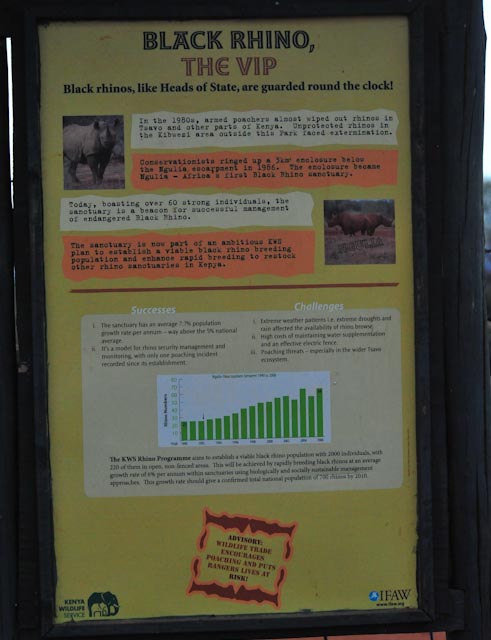
Although Tsavo National Park was established in 1948, hunting and poaching continued unabated in the area. From 1973- 1989 an average of 5000 elephants were killed each year while the black rhino was poached to the brink of extinction. To KenyaŌĆÖs credit, in 1986 with three captured rhinos, the Ngulia Rhino Sanctuary was started. This 80 square kilometre protected, monitored and electrified area is now a haven for 78 Northern Black Rhinos. We were very disappointed not to view any despite driving around the sanctuary for two hours (hours are restricted daily from 4-6 pm). We did see the beright, beautiful but poisonous Boophane plants, triumphantly red against the brown, dusty bushland. Marcelo met with senior game wardens to discuss the Rhino Rescue Project both here and at the Mtito Andei Gate H/Q.
The lesser kudu with their eleven-striped flanks and paler grey than their greater cousins, skittishly turns into the rocks and trees. Flocks of yellow-necked spurfowl forage along the roadside. As we retreat for the night to the lodge, successive herds of elephants range over
the dry land, matriarchs rubbing themselves against the rocks then approaching the waterhole, slaking their thirst. Youngsters donŌĆÖt seem to know whether playing in the dust or drinking takes priority. Plump Southern Tree Hyraxes (Dendrohyrax arboreus) scamper below the deck allowing us a view of their cream-coloured dorsal stripe.
Past Rhino Loop we bypass our marked GPS point of Leopard Tree where a lazing specimen spread herself out yesterday on the branch overhead, half expecting here to still be there. But the small river traversing the dryness is understandably the biggest drawcard. A saddle-billed stork stalks and preens and parades and catches. The pride of four still-somewhat-spotted lion cubs and their mother have also caught ŌĆō a waterbuck on the edge of the waterhole, devouring it with relish, their entire heads entering the body cavity, manes matted with blood. The crunching of bones is loud and clear. Even whist munching, their ears perk up at a pair of impala coming to drink. A short charge ensues but the youngsters still have a lot to learn.
A lone female lion approaches from the right. She has a red wound on her neck and she is thin, as if she is losing form from lack of food. Was she part of the pride? Was she left behind when they went hunting and has now caught up? Or was she from another pride? Or alone? Would they allow her to feed? Well, not exactly a purring-friendly greeting but snarling and growling she fed from one side while the adult female growl-fed from the other. Questions remain unanswered.
The hyenas are around at the dawn show for Danica and Marcelo, lured back for the continuation of the drama. Later, the waterbuck is an island in the water, one cub atop, pulling, rolling, tearing. Did her mother not tell her not to play with her food?
A real little Sand Puppy (Heterocephalus glaber) was shown to us by a ranger at the Man-Eater Shop and Information Centre. Its pink and wrinkled, folded, foetal skin looked too big for him. It is hard to imagine that these so-called naked mole rats are celebrated as a prime example of a highly social mammal which exhibits division of labour, as in bees.┬Ā As we exit the park, another diminutive form, the African Pygmy Falcon whistles its high-pitched chip-chip farewell.
The South Coast of Mombasa
Our stay for two nights at the self-catering Coral Cove Cottages felt like a step out of time ŌĆō back about 40 years to the days of free-love and hippies.┬Ā Crumbling at the edges as if succumbing to the coastal bush, they are cloaked in sarongs inside and frangipani flowers outside. The friendly, ever-hungry cat completes the homely feel. Right on the edge of the sea, we spent many hours pottering in the rockpools across the large shelf created by the Diani Coral Reef. Like solid book-ends, either end of the beach were black, lava rocks, undercut by the oceans pounding force. ┬Ā
Marcelo went for a dive with the hugest- he- has- ever- seen Leatherback Turtle and two fellow South Africans ŌĆō such friendly people! Dieter and Uwe, from German descent, ja. They and their wives had taken a six week break and had travelled in their two tent-topped 4x4s from the land down south. Wonderbaar! Eyes twinkling, their joy in life was palpable and age-defying. Hats off to you.
Entering the line, a bus displaying the slogan: ŌĆśPatience is a virtueŌĆÖ pushes in front of us at the sign disallowing such behavior. Back across the Likoni Ferry we headed up the north coast over the Nyali Bridge, leaving lively, humid, bustling, old-new Mombasa behind.
Nairobi Birthday
By: Danica (now 10 years old!)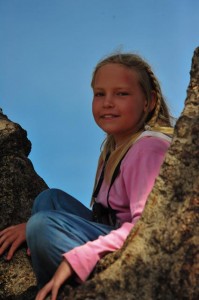
At Upper Hill Campsite in Nairobi they had no space for our trailer to open up and we chose to stay in a wooden banda called the Bunkhouse. The restaurant served outsized portions of hamburgers with chips for supper and we could have ordered a quarter of what we did. In the morning there was a lot of banking and shopping to be done and it was quite boring but I remembered that tomorrow was my birthday and that kept me happy. I swapped the books I had read with JessieŌĆÖs (the owner) fourteen year old daughter, Connie, and we played for the rest of the afternoon together with her little brother and Nicolai.
I had an early wake-up call in my third floor bunk bed with the family singing ŌĆśHappy BirthdayŌĆÖ. Nicolai gave me a fancy red card which he had made with a piece cut out of the corner in which a dolphin was drawn very nicely and a parcel of sweets tied up with banana fibre and a newly-sprouted leaf in the traditional Swahili way. Asante sana (thank you very much), Nicolai. Written in black letters on a big envelope was Danica de Freitas. Daddy had put on the surname to make it sound serious but I donŌĆÖt know why. My first presents were the books I had wanted including Gorillas in the Mist, The Witch and the Wizard, The Gift and Out of Africa. I got a new diary and journal too.
Next we drove to the RothschildŌĆÖs Giraffe Centre also as part of the dayŌĆÖs treats. There was a viewing platform 4,5m of the ground so that I was just at the right height to see the adult giraffes at head level. It felt weird to be looking down on the juveniles and calves even if they werenŌĆÖt fully grown yet. We needed to place the large, grey-brown pellets one by one onto the giraffeŌĆÖs rough tongue to feed them. The first time I tried to feed Daisy, the tallest giraffe around, she bit me really hard but it was my fault because I fed her flat-handed like I would a horse so she thought my fingers were food. A gentle baby took my fancy and she was much better at the giraffe kiss too.
You might be wondering what this giraffe kiss is. Well, itŌĆÖs pretty simple: put a pellet between your lips and wait for a 30cm dark purple tongue to slurpily pry it out. They also had tortoises at the centre and I found that the biggest one had some sort of infection because there was green puss coming out of his eyes and nose so I informed the keeper. In the giraffe museum hung up on the walls were beautiful projects done by local schools about endangered wildlife which meant that awareness is being created but pole ŌĆōpole ( slowly slowly).
The Karen Blixen Museum was where we went to find out about my ŌĆśOut of AfricaŌĆÖ book. It had some interesting things from her past life like the books she had read, her bedroom suite, big trunk suitcases
(Louis Vitton), and her mood lamps which were lighted red for when she was not in a good mood and green when she was! (Dad thought this a great idea for Mom!) I am excited to read more about her life in Africa since standing in her very own house. She thought the
African sun was too hot and always wore double hats. She ran a coffee farm and we saw the huge machine which took 24 hours to make a cup of coffee. ŌĆ£I wouldnŌĆÖt like one of those!ŌĆØ Dad remarked. She used to sit at a millstone picnic table at sunset looking towards the Ngong (knuckle) Hills. Like Joy she painted too ŌĆō another inspiring Lady in Africa!
Our other stop was the David Sheldrick Wildlife Trust where they raise injured and orphaned baby elephants and rhinos. They fed them 2l bottles of specialized milk
which they drank in a mere 10s except for the youngest, a four-week old calf walking around with a keeper under an umbrella and covered with a Masai blanket to protect his tender skin from the sun. You see, the African sun is indeed very harsh. He was rescued only a few days ago from inside a well. Some villagers had noticed a herd of elephants clustered around their well for the whole day and when they went to fetch water in the morning they found an absolutely exhausted elephant
calf. After the playful elephants had finished mudbathing we went to see Maxwell, the blind rhino, found walking in circles alone when he was 5 months old.
┬ĀAlthough all these babies have had a traumatic start to life they will have a bright future. I know it! We bought a movie about the work that the Trust has done called Protector of the Giants. One of the points that struck me from it in Daphne SheldrickŌĆÖs speech is this: ŌĆ£Elephants are so much smarter and better than us,ŌĆØ and I couldnŌĆÖt agree more. Let me remind you who ruined the Earth for themselves and the natural habitat for the animals. This world of ours needs help. Half of its forests have already been chopped down and what used to be 100% wilderness is only 12% today. If we donŌĆÖt act now to save our planet and all the species that depend on it, then we have destroyed ourselves!
HellŌĆÖs Gate National Park
By: Celeste
Anything named HellŌĆÖs Gate induces some curiosity. Driving towards the Masai Mara passing Lake Naivasha, our curiosity was piqued and we just had to explore further. A strange landscape of towering cliffs, undulating grasslands, gorges gouged out by water erosion and free-standing rock towers. Walking and cycling are encouraged but to Nicolai and DanicaŌĆÖs disappointment, children sized bicycles were not available. Our campsite on a ridge overlooked a valley where giraffe, zebra and warthogs frequented the waterhole ŌĆō filled afresh by tanker daily. The panoramic view by day was spectacular by night where we slept high up in the stars, jackal and hyena calls reverberating. Nicolai had fun playing soccer with the French boys camped nearby.
The landscape comes alive when stroked with the early morning light. Large herds of buffalo, zebra and ThomsonŌĆÖs Gazelle small against the huge cliffs. FischerŌĆÖs Tower is a 25m high volcanic plug, all that remains of an ancient volcano. It is named after the German explorer Gustav Fischer, who passed this way in 1885. According to local Masai tradition, the rock is the petrified figure of a chiefŌĆÖs daughter who turned around, against the dictates of tradition, to take one last look at her home before leaving to be married. ┬ĀNow it is home to abundant rock hyraxes and agamas.
We spent many hours exploring the lower Ol Njorowa Gorge with our guide, George, although he did not enjoy my ŌĆśGeorge in the GorgeŌĆÖ joke. We picked up black and shiny obsidian stones ŌĆō known to absorb and protect against negative energy ŌĆō may be useful for the travels ahead. The steep sides of the sandstone gorge dwarfed us as we sploshed through the hot spring water, clambering over boulders huge enough to dwarf a house. ┬ĀIt is difficult to believe that one in particular had been wedged into its present position the April, following heavy rains after it had fallen from on high from the Central Tower, tossing it here on its watery way. ┬ĀHeed those signs: emergency exit.
Considering our walk ended in the DevilŌĆÖs Bedroom, the steam arising from the Ol Karia Geothermal Station leads one down the thought-path of deeply-sleeping dragons. This internationally funded power project is one of the hottest sources of natural steam in the world with an underground water temperature of 304 degrees centigrade. A great source of natural energy but does it have any adverse effects on our Mother Earth?
Elsamere Conservation Centre
Joy and George AdamsonŌĆÖs home and home to the famous lion, Elsa, brought up as an honorary member of the family. I could hardly believe that I was standing there in their home ŌĆō looking at the bookshelves of books they read, touching their mantelpiece.
The museum room was excellent, containing detailed information, special paintings, heirlooms, awards and even JoyŌĆÖs dress worn on the opening night of the film ŌĆśBorn FreeŌĆÖ at which she met the Queen. What a talented lady to have written and painted as extensively as she did, bringing the wild and wonderful Kenya alive to the rest of the world.
The old Landy on which Elsa would lie and in which George was fatally shot by bandits, was a sobering reminder of manŌĆÖs senseless violence ŌĆō a death incongruous with a life of love of nature and given to conservation. Danica was wowed at all the languages into which her books have been translated.
Whilst the house itself was special, it was the beautiful garden overlooking Lake Naivasha which really was imbued with spirit. A family of black-and-white colobus, tiny baby clinging to its mum, stalked the branches of the fever trees. The luncheon buffet was outstanding. It was the first time I had ever seen Nicolai help himself to a second helping ŌĆō a compliment indeed!
Exiting the Lake Naivasha area between the Flower industry greenhouses (from here to U.K. in one day), the sky fell on our heads. A massive thunderstorm let loose its menacing power and the street turned to river, swamping pedestrians up to thigh level! How lucky we werenŌĆÖt still in the Lower Gorge!
Masai Mara
The main road into this world-famous reserve was tarred until just past Narok and then there was only 68km of dirt road. How bad could it be? ┬ĀDeeply rutted and potholed, we crawled the trailer along. ┬ĀHour after hour, time almost stood still as darkness fell ŌĆō and so did the rain! ŌĆō turning the road to mushy mess, thick, sticky, clinging. A few lights floated along in the darkness on roads unknown to us ŌĆō Masai with headtorches on bicycles outstripped our speed by far. Six hours it took till 22h30 that night to get to Mara Springs Mountain Rock Camp on the mighty Masai Mara boundary. We set up camp in record time and transferred the sleeping babes from back seat to beds. Now we understood why the tour operators had recently blocked the road in demonstration and protest at the most famous road in KenyaŌĆÖs condition.
We were so enriched to meet fellow campers, a family from Washington, U.S.A. who were just so lively and positive, interested and interesting! Thank you to Barbara and Robert who are contributing so widely and significantly to our world. Thank you to Norah for building a private fort from leftover building materials with Danica and Nicolai for watching movies. David, their son, we applaud you making waves and standing up for the environment at your high school back home.
The sunrise pinks washed the sky behind us as we waited to enter Sekenani Gate. Pay up, pay up. Excitement as we see a herd of buffalo, elephants and calves, then a brotherhood of cheetah; a clan of hyenas, secretary birds, crowned cranes. Then 23 hot air balloons coloured the sky, flashing searing orange from time to time. It seems the 400 U.S. dollar price tag was not a deterrent for most tourists. Of course it was the enormous herds of zebra and wildebeest that were simply stunning, stretching from horizon to horizon, filling valley after valley.
It was in the Mara Triangle Conservancy that we were treated to the most sought-after of wild game spectacles: a crossing of the Mara River. A single, brave, if somewhat foolhardy ThomsonŌĆÖs Gazelle. For him, it meant certain death as he was pulled under the brown water by an enormous crocodile. The two together downstreamed into a pod of hippos who quickly let it be known who was truly the boss.
Sitting, waiting, watching, waiting, waiting. Our one car hidden behind bushes to remain as much out of sight of the wildebeest as possible on this side of the Mara. Waiting. They approach, the herd building into a mob still fed by the back line. A courageous few descend well-worn paths down the bank, sniffing and snorting. ┬ĀSkittishly, they retreat. Repeat. All their efforts now blown by the haphazard, crazed driving of too many, too close safari vehicles on the opposite bank. Unbelievably shocking and inappropriate behavior, I was stunned anew. I suppose it should not be a surprise that humans (?) in their noisy, selfish, unthinkingness should thwart one of natureŌĆÖs most wonderful events. Confused, the wildebeest disperse.
Masai Culture Fastfacts
By: Danica and Nicolai
┬Ā
DID YOU KNOW THATŌĆ”
- The rich Masai chiefŌĆÖs village that we went to had 12 wives and so many children.
- ┬ĀAll his cattle which sell for KSh40 000 each, would add up to 1,2 million S.A. Rand.
- A young man must traditionally kill a lion before he can become a warrior. They go out in parties looking for a male. The one who spots it gets the mane, the one who throws the spear gets the teeth and the third man, the claws.
- The Masai use soil as soap down by the stream.
- The Masai have a very unique housing method. The women are in charge of building all the houses in the village. They bind sticks together so they form little squares which are smeared with layers of cow dung. On the roof is a layer of dung, then a layer of straw and then another layer of cow dung.
- At night the cattle calves are ushered into the first room of the house, the goat kids into the next room and the parents sleep next to the tiny indoor fire; all the other children in the next two rooms. The cattle sleep in the enclosure surrounded by thorns.
- Cowskins are their blankets.
- A kudu horn is blown to call for traditional dancing.
- The Masai warriors compete for the ladies by jumping as high as possible.
- Their only diet is cowŌĆÖs milk and blood. CowŌĆÖs are killed are only on very special occasions.
- Fire-sticks are used to make fire with elephant dung kindling.
- Bright red checked cloth, the Shuka, ┬Āis the warriorsŌĆÖ attire with much colourful, beaded jewellery and long, plaited hair.
The best example of equatorial rainforest in Kenya.┬Ā┬Ā 120$ allowed our family to camp one night in the forest.┬Ā It seemed like the rest of East Africa, the trend of high fees in the National Parks was going to continue.┬Ā Birding in the forest was frustrating.┬Ā The birds have such beautiful calls and one can hear them clearly but seeing them is tough, however we were able to have good sightings of Banded & Chestnut Wattle Eye.┬Ā The trees do not quite
reach the heights of Kabale, but are still spectacular.┬Ā The forest is under extreme pressure from the local population and this is evident with 17 communities living inside the forest.
The following morning, we were up at 04h30 in search of de Brazas monkey.┬Ā This population of threatened Central African primate is extremely rare and the northern Kakamega population is 32 strong or should I say weak?┬Ā In order to have a chance of seeing this monkey, one needs to travel 8 kilometres to the northern section of Kakamega forest before sunrise.┬Ā They feed along the fringes of the forest, where locals throw stones at them and chase them away with their dogs in fear that they will raid their crops.
Danica has taken a passion to primates on this trip and it was her keen interest that was the tipping point on us going on this search for de BrazaŌĆÖs.┬Ā Instead of walking through pristine primary forest, notching up a few new bird species in the process, we found ourselves walking through muddy mielie fields.┬Ā Having driven the 8 km, we parked alongside a subsistence farmerŌĆÖs field and walked off towards the forest.┬Ā We then walked along a river, looking into the mid and upper canopy of the forest, our eyes piercing the shadows in search of primates.
We saw a primate shadow, but in a flash, it was gone.┬Ā These monkeys have become excessively shy thanks to the pressures exerted on them by humans.┬Ā This was to be our only sighting of de BrazaŌĆÖs, unconfirmed and unsatisfying.┬Ā We had sightings of Red-tailed monkey shortly thereafter as well as VerreauxŌĆÖs Eagle Owl, White Chinned Prinia, oh, and a waterfall.┬Ā With each walk at a premium, the family was disappointed.
We met an enchanting Spanish couple at Kakamega.┬Ā Borja was a keen photographer and we chatted and identified some of the birds he had seen on his trip in Kenya, as well as about the European Economy.┬Ā They were pessimistic about SpainŌĆÖs future and said that the unemployment rate in their age group of 20-30 was close to 50%.┬Ā Although they live in Madrid, they do not avidly support the Spanish Champions.┬Ā In the evening we had a drawn out Equatorial storm which lasted a few hours.┬Ā This turned out to be a good thing as we got to learn that Borja, besides looking after endangered LammergeierŌĆÖs in Spain, is also a part-time magician.┬Ā This kept Nicolai & Danica enthralled way past their bed time.┬Ā And as a direct result, we are now exposed to the occasional simulation of trickery by Nicolai.┬Ā Sharing a meal with Borja and Montse was a pleasure, fantastic people.
Lake Nkuru National Park
We arrived at Nkuru town late.┬Ā There had been road works aplenty on the B3 with many detours.┬Ā Being 21h00 and too late for access into the national park, we overnighted at the Merica Hotel.┬Ā Over-rated, over-priced and full of tourists from the Far East, it was not our style.
There had been a lot of rain in Kenya in the last week, some of which we witnessed personally at Kakamega and now at Lake Nkuru, we saw her bulging at the rims as a result.┬Ā Delightful waterbirds greeted us along the lake shore close to the gate.┬Ā Great White and Pink-backed Pelicans, Spoonbill, Great White and Little┬ĀEgrets, Yellow-billed Storks stalled our passage to the Kenya Wildlife Society Campsite.┬Ā The lake was so full that the roads were threatened with its over-flowing.┬Ā Buffalos did not mind the ‘mush’ and occur at Lake Nkuru in large numbers.┬Ā
Arriving at our overnight spot, I moved Staffie and the trailer into position ŌĆō Thwack ŌĆō the sound of crunching timber, followed by a slump as the front wheel gave way.┬Ā Grass had grown over some rotten wood that was concealing an un-marked French drain, shit.┬Ā The chassis of the vehicle had bottomed out to one side as there was 4m separating earth and the right front wheel.┬Ā Now what?
Unhitch the trailer?┬Ā How do I bridge the gap?┬Ā I went over to call Martin, the attendant at the camp.┬Ā He went in search of materials and brought back Mojito the camp manager.┬Ā He then went off and brought some planks that were about about 12mm thick.┬Ā They were not going to work and I looked around and noticed that the camp had a good fence around it, made of split-poles.┬Ā I asked if there were any spare poles.┬Ā Martin went off and returned with one, it was long enough, but we needed another one at least.┬Ā A thicker plank arrived (about 40mm) it may just be sufficient.
I got the high-lift jack going, using the jacking point on the ARB bumper, the plan was to lift the vehicle up sufficient to bridge the gap with said materials. 10, 20, 30 cm the planks were shoved under the front wheel.┬Ā Staffie was lifting, but the angle of the high-lift jack was increasingly oblique.┬Ā The front right wheel was lifting off the ground.┬Ā Then there was a slide and another crunching sound of broken timber, Staffie had slid about 8 cm across the hole, further away from the side.┬Ā Our 40mm thick plank disappeared into the chasm of human excrement, broken and never to be used again.┬Ā Our hope now lay in the solitary split pole and other broken bits of timber.┬Ā Lift, slide repeat ŌĆō 15cm.┬Ā Lift, slide, repeat – another 15cm. repeat, repeat, repeat.┬Ā The edge was approaching the left front wheel, we had moved the vehicle over half a metre, but the edge of the excavated drain was crumbling.┬Ā At the 6th attempt, we wedged the split pole in a way that resistance was curtailed.┬Ā In low-range and a skid and screech, Staffie jerked over the gorge.
Our afternoon drive was incredible.┬Ā A rhino calf, just close to a month old.┬Ā Mom was grazing close by and wow, what a privilege.┬Ā This female had the longest, most beautiful horns I had ever seen.┬Ā We spent a long time looking, staring, at this beautiful sight.┬Ā Mother and calf, it belonged and fit so perfectly on this African plain.┬Ā If only ŌĆ”.
Black Rhino also occur at Lake Nkuru.┬Ā We searched, but at 250$/day for our family at this park, 24 hours was not enough to see these rare animals.
┬ĀWe were out of our camp before day break the following day.┬Ā Within minutes on the savannah, within 500m from our camp were 2 lions.┬Ā Not far from them a fully grown male buffalo ŌĆō alone.┬Ā We had hardly come to a standstill when the male buffalo started running, sprinting in earnest, directly at the male lion.┬Ā The male lion was
not hanging around, and he started running away, female in oestrus or not, he charged accross and away from us, buffalo in tow.┬Ā The female lioness stood her ground, watching almost with an amused look on her face, unconcerned.┬Ā A few hundred metres, lion and buffalo disappeared from sight.┬Ā There was another vehicle that approached us – ŌĆ”ŌĆ” We chatted, both parties excited with what we had just witnessed.┬Ā In the distance vervets were shouting out an alarm call.┬Ā This was the cue for teacher and part-time photographer, to move off, announcing, ŌĆ£ IŌĆÖve seen leopard there before.ŌĆØ
The male lion returned approaching slowly, keeping a watchful eye out for angry Mr. Buff.┬Ā 50m stop look-around.┬Ā With lioness having slumped on the ground and nodding off, she too was not easily spotted through this metre high hyperhenia .┬Ā They seemed pleased to be back together, with lioness almost purring as she wrapped her tail around her suitor, luring him away for the days mating activities.┬Ā We had noticed a carcass nearby. They had eaten well the night before. This was a lion pair in its prime.
Lake Nkuru NP is all that it promises and more.┬Ā Situated on the outskirts of the town of Nkuru, this popular park is a gem.┬Ā I spoke to the warden, Joseph Dadacha about the Rhino Rescue Project.┬Ā He was intrigued and hugely supportive of the treatment.┬Ā This fantastic park may soon have their fantastic rhinos protected even further with the RRP.
Kibale to Ziwa: In Search of Specials
By: Celeste
One of those places we have been looking forward to, especially Marcelo who was out to seek the very special, very elusive Green-breasted Pitta. Heading northwards, we crossed the Equator, stopping for the obligatory photographs, holding up the zero and celebrating with an Equator party ŌĆō okay, well, joghurt and biscuits. ItŌĆÖs not what you have but what you make of it!
We didnŌĆÖt know where we would stay exactly(NicolaiŌĆÖs favourite word at the moment) considering our first choice of camping at the Kibale National Park headquarters would have attracted the usual high park fees. Everything is additional and extra: entrance per person per day plus camping fees plus entry for a foreign registered vehicle.
So we opted, not under too much duress, to rather stay at the highly acclaimed Ndali Lodge perched on the rim of the Nyinambuga Crater Lake ŌĆō featured on the Ugandan 50 000 shilling note. Welcoming us was amassive Natal Fig (Ficus Natalensis) abuzz with a colony of VieillotŌĆÖs Black Weavers.
The Ndali Estate is owned by the Price and Sturdy families whose involvement in Uganda dates back to the 1920ŌĆÖs, when Major Trevor Price arrived from England to pioneer tea growing in the Fort Portal area. During the 1970ŌĆÖs, Idi Amin confiscated foreign owned land in Uganda, including Ndali. The Major died in 1977 and when President Yoweri Museveni invited dispossessed landowners to return to Uganda, it fell to his son, Captain Mark Price, to reclaim the familyŌĆÖs property.
Exploring his fatherŌĆÖs overgrown estate in 1994, Mark discovered the fabulous viewpoint on the rim of the Nyinambuga Crater Lake and conceived of the idea of Ndali Lodge. In due course, Captain Mark Araali, as he was fondly known by the Toro people for whom he built churches, clinics and schools, built the lodge, which opened in 1996. Sadly, he died in September 1998, only two years later. Since then, Ndali has been run by family and friends including MarkŌĆÖs sister Caroline, his niece Lulu Sturdy, who now produces Ndali Fair Trade vanilla, his son Aubrey, and family friend Becky Holt. Aubrey settled in Ndali permanently in 2002 and lives there happily with his Ugandan wife Clare, continuing in his fatherŌĆÖs tradition of upliftment of the community.
Ushered past the lawn and pool to our family cottage we
descended upon the bathroom with HOT water and a BATH as dusty travellers and exited renewed with fresh energy. Quiet time on our veranda afforded us a tremendous view over the forested valley with Great Blue Turacos competing noisily with Eastern Grey Plaintain Eaters and Angolan Black-and-white Colobus for ripe fruit. Dinner was served by candlelight on a white, damask tablecloth with old silverware, old crystal glasses and old bone-handled knives: tomato soup; chicken and vegetables and a delicious lemon cake.
The morning 3 hour farm walk was through natural vegetation then through banana plantations where we learnt how to wrap and tie a gift parcel in banana leaves. The avocado-seeking dogs accompanied us, flushing out colobus and blue monkeys. Danica took to weaving with raphia palm leaves ŌĆō soon we all had new bookmarks. The vanilla crop was a thing of wonder ŌĆō under the fair trade umbrella, 1000 farmers and their families are accredited by this label ŌĆō a powerful trade certification for quality and method. Originally from Central America, this orchid vine-form is trained on the Jitrophy tree stands, mulched and hand-pollinated (can you imagine!), requiring a high rainfall and mixed sun-shade, taking 5-7 years to produce itŌĆÖs first crop. The pod takes 11 months to mature which are then hand-picked into baskets. The pods are placed into barrels that are soaked in 60-63 degree C water for three minutes. Then the pods are wrapped in blankets and taken to large wooden boxes to sweat. Each worker is given a blanket and takes it out every day to sun dry on racks for about 2-3 months and hand sorted. The repeated exposure to hot sunshine encourages the breakdown of gluco-vanillin into vanillin through fermentation.
Once the vanilla is dry it will start forming crystals. It is then meticulously sorted, graded and kept in tightly sealed boxes to continue to mature. Vanilla is then extracted through cold pressing, filtered, bottled and packaged. The factory tour was a treat in itself despite not getting a little taste at the end, but understandable as all the Ndali vanilla is retailed in the U.K. or snapped up by the U.S.A. Tom and Jerry ice-cream makers. Hats off to Lulu and her incredible Ugandan Mountains of the Moon team!
Marcelo left to explore the true Kibale forest in the dark hour of 4am the following morning having previously arranged a birding guide. We three did a crater walk with Steven and three of the farm dogs. On our return we had an excellent sighting of a Western Nicator showing off its yellow spots and bum, and calling repeatedly and loudly- a fine display in front of the yoga platform. That little Green-breasted Pitta turned out to be a little too elusive although Marcelo did hear him. His first sighting of the White-Spotted Flufftail in the Bigodi Swamp made up for that disappointment, Him seeing the Grey-Cheeked Mangabey made Danica simply green with envy.
We left the hospitality and spoil of Ndali after breakfasting with a wonderfully knowledgeable and entertaining group of professors and doctors ŌĆō their high level of banter a welcome respite from the ŌĆ£put your napkin on your lapŌĆØ and ŌĆ£no you may not yet leave the table to play dartsŌĆØ variety of conversation. They were thrilled to view DanicaŌĆÖs photograph of the highly poisonous Forest Vine Snake which we had sighted swiftly moving across the road and up a tree at a considerable speed within the forest. A delight for us, I am sure! May the sun always shine upon your faces and the wind be always at your backs, kind sirs.
Hats off to our next team of heroes for rhinos ŌĆō Angie and Johan Genade ŌĆō ex South Africans who took over Ziwa Sactuary some 150kms north of Kampala about four years ago. These 12 rhinos are now the only rhinos in Uganda ( apart from two in a ‘zoo’), brought in after they had become locally extinct in 1986 due to poaching. We were treated to a tracking walk with these gentle beasts.
The first family group we came across was the dominant male Taleo who has sired all six of their calves, and the lovely Bella (fat is really beautiful!) who bum-rubbed and then sharpened her horn on a tree. This exact behaviour was then repeated by their 7-month old Bella-Donna. Say NO to de-horning!
As if watching from a mere 30m distance wasnŌĆÖt enough, a second group lumbered by consisting of the fat mama Kori accompanied by her 7 month old Laloyo (meaning Victory in the local Ancholi language) and her older two-and-a-half year old male calf, Justice. These precious animals were in their element, gazing peacefully, oblivious of their 24 hour guards, exuding an aura of bliss.
Taleo had a small injury just above his horn from a fight with Moja, the second-in-command despite his name meaning ŌĆśnumber oneŌĆÖ. However, it is invariably the third bull Hasani who ends up injured as his bravery outweighs his dominance. BullsŌĆÖ dominance is certainly (as Nicolai says ŌĆō certaintly) problematic here, as elsewhere where captivity, territory and rhinos are in the same conservation equation.
We did not get to meet Obama (thus named i
n honour of his American mother Nandi and Kenyan Father, Taleo) now three years old, nor little Malaika, meaning angel.
Thank you to our amazing hosts for the excellent braai and generous hospitality. Dit was lekker kuier!
We were so impressed by AngieŌĆÖs 24/7 dedication to these rhinos. Listening to the trials and tribulation she has undergone on their behalf to achieve their protection and successful breeding is inspiring. In turn, she was encouraged by how the rhino rescue project could assist them and would strongly recommend adopting it as an additional tool for their protection to the Rhino Fund Ugandan Board overseeing Ziwa.
It will be another victory to have all of UgandaŌĆÖs rhinos protected by rhino rescue project technology thus further diminishing the threat of poaching. When these rhinos are released back into UgandaŌĆÖs National Parks, having treated horns with tracking devices will be a huge asset to their survival.
You can PLEASE assist with funding for this worthy cause through our donations page on this website. Make a difference ŌĆō treat a rhino!
Queen Elizabeth National Park – Uganda
Blog & Pictures by Danica de Freitas (9)
It turned into a bit of a night drive (as one of the trailerŌĆÖs springs broke) upon arrival. The village-filled landscape changed to grass so long on the side of the road we couldnŌĆÖt see over it. A hyena ran away with a large bone and a large python ventured out of his stalky world to cross the road flicking his tongue in greeting.
When we reached the entrance gate one of the rangers accompanied us to the Ishasha Campsite, telling us all about the animals and we found out that Queen Elizabeth hosts┬Āmore than┬Ā400 species of birds and five resident prides of tree climbing lions (which we never saw) and the ranger was obviously very proud of that fact. Another thing was that within the parks borders reside some 6000 elephant, sadly often poached if they cross the river (that we camped alongside) into the Congo.
Chattering cries led me to my first sighting of red-tailed monkeys (Cercopithecus
┬Āascanius) early the following morning. Their twitching tails were much easier to see than the monkeys themselves which overall stayed much more still while eating figs.
When they decided to switch branches their back legs boosted them and their illuminated tails stayed stiff.
Once we had finished drinking our tea we hopped into the car and set off on a game drive hoping for the best. The wheels kept turning for at least an hour while Nicolai and I busied ourselves with schoolwork when Mom noticed a male antelopeŌĆÖs head
poking out of the grass. It was most definitely not an impala and was too big for a duiker. I just happened to open the mammal book on the correct page and read out the name ŌĆ£kobŌĆØ to the rest of the family. He had a white patch on the underside of his throat, a coarse coat and magnificent horns. We soon found out that the kob is UgandaŌĆÖs national animal and saw a herd of about 200 shortly after that first sighting.
Topis kept a lookout on top of the termite mounds and buffaloes barged each other out of the way trying to get to an already overcrowded mudhole. Small, swampy waterholes were a lively attraction for a series of waterbirds including Greater Jacanas and their chicks, Hamerkops, Egrets and Herons while a Black-headed Gonolek (a special of the area) was usually present perched on the shaggy bushes singing merrily above the pools.
Returning to camp we found our lush, campsite meadow full of butterflies pollinating microscopic flowers and our resident pod of hippos had gathered on the stony sandbank in the centre of the river where they were socially interacting with naps, short swims, nudges and yawns.
ŌĆ£Off to the Lake Edward Flats,ŌĆØ said Dad at 2pm where there was apparently the best game-viewing in the entire park. 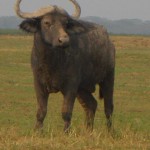 Defassa waterbuck, several herds of kob and more buffalo were thus added to our list. Warthogs trotted stealthily away when they heard the car, young piglets trailing behind.
Defassa waterbuck, several herds of kob and more buffalo were thus added to our list. Warthogs trotted stealthily away when they heard the car, young piglets trailing behind.
The following morning we made our way through a beautiful forested area up to the northern section of the park, crossing a bridge over the Kazinga Channel where Lake George joins Lake Edward. A huge fire across  the grassland made me really upset especially when I saw a herd of elephant just across the road and wondered what would happen to them. Dad told me about block-burning but I hated the idea. What about the ground-nesting birds, warthogsŌĆÖ burrows and predatorŌĆÖs cubs hidden in the grass?
the grassland made me really upset especially when I saw a herd of elephant just across the road and wondered what would happen to them. Dad told me about block-burning but I hated the idea. What about the ground-nesting birds, warthogsŌĆÖ burrows and predatorŌĆÖs cubs hidden in the grass?
We drove in to the barren Myewa Campsite surrounded with flowering candelabras and overlooking the larger Lake Edward. On the opposite bank thousands of Marabou Storks and massive congregations of elephant, waterbuck and buffalo were drinking. A little Bwamba dark form Zebra Mouse (Lemniscus striatus) scurried out to greet us.
Dad and Nicolai unusually were the first ones awake and had already seen a warthog and 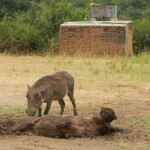 three waterbuck come to drink at one of the puddles left by the night beforeŌĆÖs storm. I followed their tracks around a few bushes, found them in a clearing and edged closer and closer. I managed to get within 2m from them then turned my attention to the warthog. He was rolling to his heartŌĆÖs content in the sloppy mudpool which was of no interest to any other animal, except two female warthogs passing through the area. A good old body-scratch around the tap and he went away to look for some bulbs or more places to satisfy his itchy behind. Only one of the other warthoga wanted a mudbath while the other kept oinking, calling her I suppose for she was soon up on her feet but she couldnŌĆÖt resist digging up some loose sand with her snout to coat her mud.
three waterbuck come to drink at one of the puddles left by the night beforeŌĆÖs storm. I followed their tracks around a few bushes, found them in a clearing and edged closer and closer. I managed to get within 2m from them then turned my attention to the warthog. He was rolling to his heartŌĆÖs content in the sloppy mudpool which was of no interest to any other animal, except two female warthogs passing through the area. A good old body-scratch around the tap and he went away to look for some bulbs or more places to satisfy his itchy behind. Only one of the other warthoga wanted a mudbath while the other kept oinking, calling her I suppose for she was soon up on her feet but she couldnŌĆÖt resist digging up some loose sand with her snout to coat her mud.
After our last game drive up the lava flow hills surrounding the beautiful Crater Lakes, the Marabou Stork that had been patrolling since dawn watched us leave with sad eyes and took to the sky.
Bwindi Impenetrable National Park ŌĆō Uganda
Diane Fossey, another doyenne of conservation, opened up the world of Gorillas to the universe.┬Ā Although a fiery and controversial character, her grit and determination was arguably what was necessary in this tough part of Africa to help save the Gorillas. Her colourful character has left behind a colourful place.┬Ā Narrow roads, singing school children from nearby villages, smiling rangers and guides, ŌĆśyou are most welcome to Bwindi ŌĆ”ŌĆÖ says Kenneth the manager at Ruhija.
Research is ongoing, but tourism has also has also become a crucial part in the conservation of the species.┬Ā To trek with the Gorillas in Rwanda cost 750$ per person.┬Ā In Uganda, it is cheaper at a mere 500$ per person.┬Ā We based ourselves at Ruhija, and here there are 2 family groups that are used daily for tourism.┬Ā There is a third group (the Kyaguriro group) which although principally a research group, also has the ŌĆśoverflowŌĆÖ tourist group visit them.┬Ā We had not pre-arranged permits, as we were unsure of our timing ŌĆō thank goodness.┬Ā This visiting group is therefore generally smaller.┬Ā On the day I chose to track the gorillas, there were 21 tourists, which from this camp alone (there are 2 other ŌĆśtracking campsŌĆÖ in Bwindi) translates to 10 500$ (R90 000)/ day.┬Ā For three camps R270 000/day or R8.1 million per month, not too shabby.┬Ā Granted this is peak tourist season.
So as Nicolai & Danica posed the question, Was it worth it?
The Kyaguriro group comprises 18 individuals, one silverback named Rukina and 5 baby gorillas, under 3 years old.┬Ā They are also the furthest away from the camp at Ruhija.┬Ā In eager anticipation, we arrive at Uhringa at 07h30, eager to get going.┬Ā The briefing follows around 08h30 with the paperwork out the way, and weŌĆÖre in the primary equatorial highland forest, ten minutes thereafter.
There are 2 Swedish 2nd year students that have been volunteering in Uganda the last 5 weeks, David our guide, Amos another tracker and an armed ranger that complete our group.┬Ā I enquire with our armed ranger the need for his AK47.┬Ā He is quick to remind me that there are 70 remaining forest elephants that have a bad reputation.┬Ā David adds that should one come across a lone Silverback, they too can be quite aggressive.┬Ā My twisted imagination feels that it is more likely for the odd DRC bandit strays across the border, or perhaps ŌĆ” a band of poachers.
The rain forest is unpredictable.┬Ā The slopes are steep and often muddy.┬Ā When one hikes, one could wish for longer mountain type ridges.┬Ā Instead one finds, conical peaks which mean that you need to go up, and then down, often.┬Ā The air is humid, and perspiration covers your face in minutes.┬Ā This is the cool, dry season and June to September are the best month to track gorillas in Bwindi.┬Ā This morning is particularly misty and damp, but thankfully there is no rain.┬Ā Now and again the sun shines, but mist and clouds win the day.
This group is the furthest out, weŌĆÖre 3 hours into the trek, and are informed by radio that the other two groups have seen the gorillas and are on their way back.┬Ā It is great being in the rain forest, however, we need to come back to Ruhija the same way, and we have not yet found the gorillas.
Bwindi is one of the richest forests in East Africa for birds (350 species), butterflies (310 species) and trees (324 species).┬Ā Bwindi also has 120 species of mammals and 10 species of primates.┬Ā Some of these species are only found in the highland forests of south-western Uganda, eastern Congo, Rwanda and Burundi.┬Ā This is known as the Albertine Rift.┬Ā Bwindi has 23 birds endemic to the Albertine Rift and 10 trees endemic to Uganda.┬Ā Half of the worldŌĆÖs population of critically endangered mountain gorilla occur in Bwindi.
ŌĆ£WeŌĆÖre half an hour awayŌĆ”ŌĆØ David tells us after brief communication over the radio with the researchers.┬Ā ŌĆ£They are with the gorillas ŌĆ”ŌĆØ he says boosting our spirits.┬Ā My left boot had just sunk knee deep into a bog, but as we climbed the next steep tree covered slope, we came across gorilla nests.┬Ā I was surprised to note that they were not far off the ground.┬Ā I guess this makes sense, considering the average Silverback may weigh over 200kg.┬Ā Gorillas defecate at their nest sites and judging the age of the faeces is the easiest way to know how old the sites are.┬Ā ŌĆ£3 daysŌĆØ came the answer from David.┬Ā They make fresh nests daily and seldom forage more than 1 kilometre a day.┬Ā We had seen a lot of elephant dung, but this was our first encounter with gorilla excrement, unsurprisingly very human like.
At the top of the ridge, we met a research assistant, ŌĆśjust over the hillŌĆÖ was the comment.┬Ā The group became quiet with anticipation, edging closer.
As we craned our necks forward, our eyes scanned the slope for the familiar shape that books and movies had shown us.┬Ā A furry black shape moved into a clearing from the cover of a thousand of morning glory plants.┬Ā Quite unperturbed with our presence 50 metres away.┬Ā We crunched and snapped our way closer, now with facial masks covering our mouths and noses.┬Ā There are no paths where gorillas forage and I now understood why our party had machetes.┬Ā You move forward more in hope than certainty, one knows that there is earth, you just cannot see it.
Four stubby digits peel back a ranch of undergrowth, a one year old is too curious.┬Ā For a few minutes she stares into our eyes, in search of answers, then there is a tug on her shoulder and her mother carefully moves her off, as though adjudicating the time spent with us as sufficient.┬Ā We can see the conical shape of the SiverbackŌĆÖs head behind the bush, but sitting down contentedly, munching, we do not have a clear view.┬Ā Although a group of eighteen, as yet we can only make out 7 shapes.┬Ā The secondary growth where they are eating is not strong and a junior gorilla brings a young shrub cracking to the ground, his weight too heavy for the bush.┬Ā The Silverback edges further down the slope and we follow slowly, moving into the space the female and her baby were minutes ago.┬Ā The whole area feels energized.┬Ā These gentle creatures are special.
Rukina is now looking at us, head on.┬Ā Without stopping the chewing, his bloated stomach tells us that he has eaten most of the 20kg he eats a day.┬Ā Although gorillas may look ŌĆśfatŌĆÖ it is a direct result of the proportion of plant matter they eat on a daily basis.┬Ā As a result it is very difficult to tell when females are pregnant in the field.┬Ā Gorillas do not eat meat, although they have been known to take on the odd ant, as well as dead infants.┬Ā Unlike chimpanzees, gorillas do not hunt.
Now and again the group gives off gentle grunts; the researchers which are now accompanying us reply with poor imitations of the grunts.┬Ā This is supposed to make the gorilla group more relaxed and to let them know that ŌĆśwe come in peace and mean them no harmŌĆś.┬Ā With these vocal acknowledgements, the group is kept under wraps by the authorative silverback.┬Ā Other than the odd branch being broken or snapped off, there is little other sound coming from the group ŌĆō black billed touraco calls out, and then flies past our group.
An immature black back (immature silverback or young male) has made his way from the valley floor up towards the group on the ridge.┬Ā With our stare fixed on the silverback 13m away and one of his females with a baby, we hardly noticed the blackback.┬Ā 10, 9, 8 ŌĆ” 2m away from me.┬Ā WeŌĆÖre supposed to stay 7m away from gorillas at all time, but such is the level of this habituated group.┬Ā Even more interestingly, the blackback did not walk off, but instead stayed 2 m away, yanking leaves off the brush, occasionally glancing back over his shoulder directly at me.┬Ā I felt a yank at my shoulder ŌĆō David the guide asking me to move back slowly.
There we were 4 youngsters in the group and we continually saw them peeking at us, okay – staring.┬Ā It was not rude.┬Ā They seemed to be reaching out.┬Ā Could they see things that we could not?
Time flew, and we got the ŌĆśtwo minutes, final pictures pleaseŌĆÖ call.┬Ā Only an hour is allowed per visit.
Whilst we were in their presence we did not speak much, we did not need to.┬Ā All was understood.
I had been privileged.┬Ā Thank you.
Burundi and Rwanda ŌĆō The Unexpected
By: Celeste
Sometimes people happen upon our paths, or we happen upon theirs, for a reason. Thus we met a group of motorcyclists of mixed nationalities at JakobsenŌĆÖs Beach outside of Kigoma, Tanzania. Armed with some advice, we headed for a country not on our plans for c2c at all ŌĆō Burundi. An excellent, winding tarred road led us across peaks and valleys to the Kamonanira Border Post. We had the privilege of watching a border official opening up according to a strict daily schedule: first a few Christian songs on the cellphone; the placing and raising of the flag; tying back the curtains; reading and tidying of papers.
Not 20m on the road becomes nasty. Passing under a wooden pole structure from which leaves were hanging, we entered into Burundi. Mugina is just a police post where it took ages for all the niceties due to reading challenges. Hooting behind hurriedly shifted us to the right side of the road. Pardon moi! 25kms further there is a border post of sorts at Mabanda where we felt rather intimidated by large crowds of onlookers surrounding the vehicle – touching, banging and peering in.
Descending the hairpin bends is dizzying and sent ŌĆśCharlieŌĆÖ into a spin. Nyanza Lac is a sprawling town, as were others along the lakeside route up the eastern edge of Lake Tanganyika up to the capital, Bujumbura. Badly potholed, streaked with bumps and well patrolled by policemen, the pace was slow. No sign of the Burton-Speke nor the Stanley-Livingstone monuments marked on the map. Bush stops were nigh impossible due to the highly populated areas. Colourful clothes are the order of the day, the brighter and more luminous the better ŌĆō oranges, pinks and greens.
The capital city is larger and cleaner and quieter than expected. I suppose they are following the no-litter example first enforced in Rwanda. We B&B at the Hotel du Lac Tanganyika Hotel on the Lake, cuddling up on the bed with pizzas to watch the Wimbledon Finals. Go Federer!
After solving ŌĆ£The Strange Case of the Faulty, Smoking Wiring under StaffieŌĆÖs BonnetŌĆØ, we spend our second night at the lovely Bora Bora guesthouse. A few groceries (very few at those high prices), some postage and we left town, within our 48-hour transit visa period ŌĆō also not inexpensive at US$40 each.
The main road to Kayanza was lined with beautiful plantations and crops, lush and well-maintained. The poor banana boys struggled under heavy loads on their bicycles up and down the steep roads. Motion sickness kept the kids safe from schoolwork for another day. The border at the Akonyaru River was a push-and-shove as a busload arrived – first come is not necessarily first-served.
The border official in Rwanda was welcoming until we were awarded our first search of the trip. A few sides of the trailer and two computer cases luckily satisfied his needs ŌĆō we did not feel too bad as the car in front had its suitcases and boot thoroughly checked.
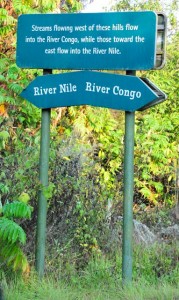 Nyungwe National Park surpassed all expectations: a verdant vegetation mosaic of montane rainforest on the Congo-Nile watershed. The excellent information centre at Uwinka (meaning ŌĆś├¦ow mountainŌĆÖ) kept us busy for a few hours, particularly fascinated by the ŌĆ£Source of the NileŌĆØ. Did you know that a further source of the Nile was found in 2006 by three Irish modern day explorers so that its total length is now 107km longer than previously thought? We were saddened by the tale of the last elephant poached in the forest swamp in 1999 ŌĆō known as the Kamiranzovu Swamps ŌĆō ŌĆ£the place that swallows elephantsŌĆØ. Although chimp and gorilla tracking were on offer, we rather enjoyed nature and birding walks. The largest group of 400-strong Black-and-white Colobus (Colobus angolensis ruwenzori) were in attendance, noisily feeding, jumping, squabbling and the ŌĆśvulnerableŌĆÖ LŌĆÖHoestŌĆÖs Mountain Monkey (Cercopithecus LŌĆÖhoesti) were gorgeous with their white facial trimmings.
Nyungwe National Park surpassed all expectations: a verdant vegetation mosaic of montane rainforest on the Congo-Nile watershed. The excellent information centre at Uwinka (meaning ŌĆś├¦ow mountainŌĆÖ) kept us busy for a few hours, particularly fascinated by the ŌĆ£Source of the NileŌĆØ. Did you know that a further source of the Nile was found in 2006 by three Irish modern day explorers so that its total length is now 107km longer than previously thought? We were saddened by the tale of the last elephant poached in the forest swamp in 1999 ŌĆō known as the Kamiranzovu Swamps ŌĆō ŌĆ£the place that swallows elephantsŌĆØ. Although chimp and gorilla tracking were on offer, we rather enjoyed nature and birding walks. The largest group of 400-strong Black-and-white Colobus (Colobus angolensis ruwenzori) were in attendance, noisily feeding, jumping, squabbling and the ŌĆśvulnerableŌĆÖ LŌĆÖHoestŌĆÖs Mountain Monkey (Cercopithecus LŌĆÖhoesti) were gorgeous with their white facial trimmings.
The canopy walkway was somewhat of a let-down because as we walked the stiff hills we were often at canopy-level anyway but the giant tree ferns on the Ishigishigi Trail were stunning below. We hear the Red-chested owlet and the Barred long-tailed cuckoo call provocatively through the forest. Prote (like Protea without the ŌĆśaŌĆÖ), our guide, was a fledgling botanist and I happily soaked up every bit of knowledge, enjoying the local medicinal uses and beliefs, later matched to the thick field guide on the forest which Marcelo had purchased for me.
The Giant Lobelia (Lobelia gibberoa) named ŌĆ£fluteŌĆØ (intomvu) in the local language was exactly that: the straight, hollow flower stalk first prized by sunbirds, is dried and used as a traditional flute. It is also said that the honey tastes particularly delicious when the bees have feasted upon these giants.
MarceloŌĆÖs bird walk (desperately seeking those 25 rare endemics) was productively frustrating, as forest birding usually is! Nevertheless he managed to clock up several lifers and an impressively long list of sightings.
Danica and I were entertained by a threesome of Black-and-white casqued hornbills on our walk and Ruwnzori turacos flashed their colours too. Nicolai was proud to spot the first of many Great blue turacos and to share the video footage he took of the troop of colobus munching the rocks for mineral enrichment with a group of visiting primatologists from Arizona. Both the children had colds and sniffles aggravated further by the highly variable weather conditions, frequently drizzly and cold.
The mornings were especially fresh and as the sunlight filtered through the mist and leaf layers, the early birds were in attendance with the fairies and butterflies. What a contrast to the USAID refugee campŌĆÖs white tents mushrooming on a hill ŌĆō a sobering prelude to the Genocide Memorial in the capital city, Kibali. The large, modern building has been well set out amongst gardens and fountains and is well-run with audio accompaniments. Powerful ŌĆō we came away different somehow than when we had entered, with Danica being particularly solemn. Tasteful and meaningful displays cannot hide the grisly truth of the 1994 genocide ŌĆō such a contrast to South AfricaŌĆÖs joy in freedom of that same year. What is sad now is that the president has been implicated in arms dealing with Congo recently after apparently leading the country so well since that dark era. If only humans could use their intelligence and discernment better!
Methinks the olde poets touched on such ŌĆśgiving thanks for simply being aliveŌĆÖ themes in odes to joy and life. Carpe diem.



